Mexico's Casa El Pinar balances show-stopping looks with sustainable architecture
Casa El Pinar walks the tightrope between drama and sustainability, courtesy of Taller Paralelo
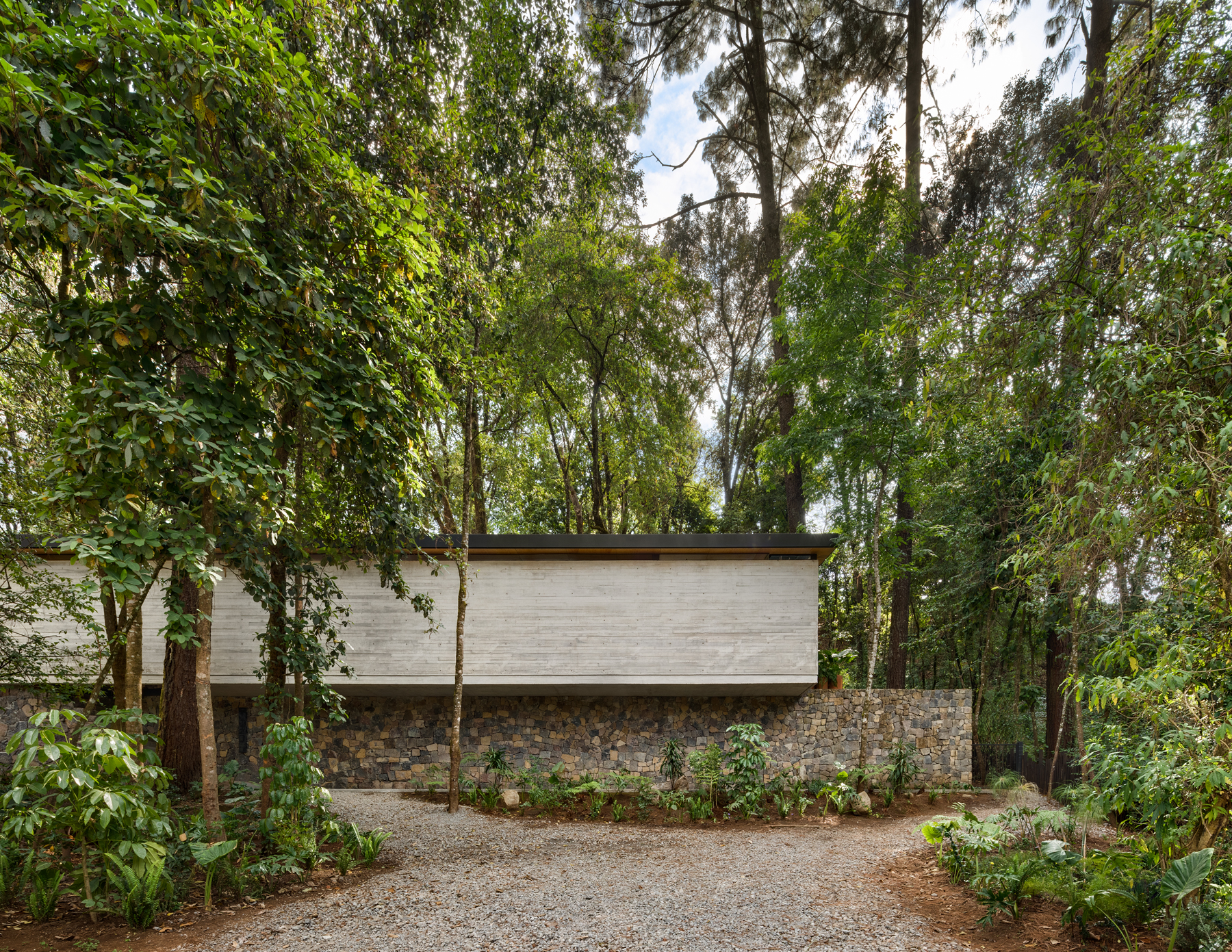
Rafael Gamo - Photography
Is it possible to create a house that is strong and clear in its language, but at the same time respectful to its natural surroundings? This was the question the architects at Taller Paralelo, a Mexico City-based architecture studio, had to tackle when appointed for a new-build residential commission in a forest setting in the country's leafy Valle de Bravo. The result, Casa El Pinar, demonstrates just how a dramatic look can be balanced with sustainability.
The house, a vacation retreat for a private client, is an extraordinary escape sitting on a sloped terrain, among mature trees and low vegetation. The architects started by placing the house and crafting its design around the existing landscape – that is, they twisted and turned the floorplan so that no trees need be removed. Deep excavation and disturbance of the land were also avoided, adding to the overall architecturally sustainable approach.
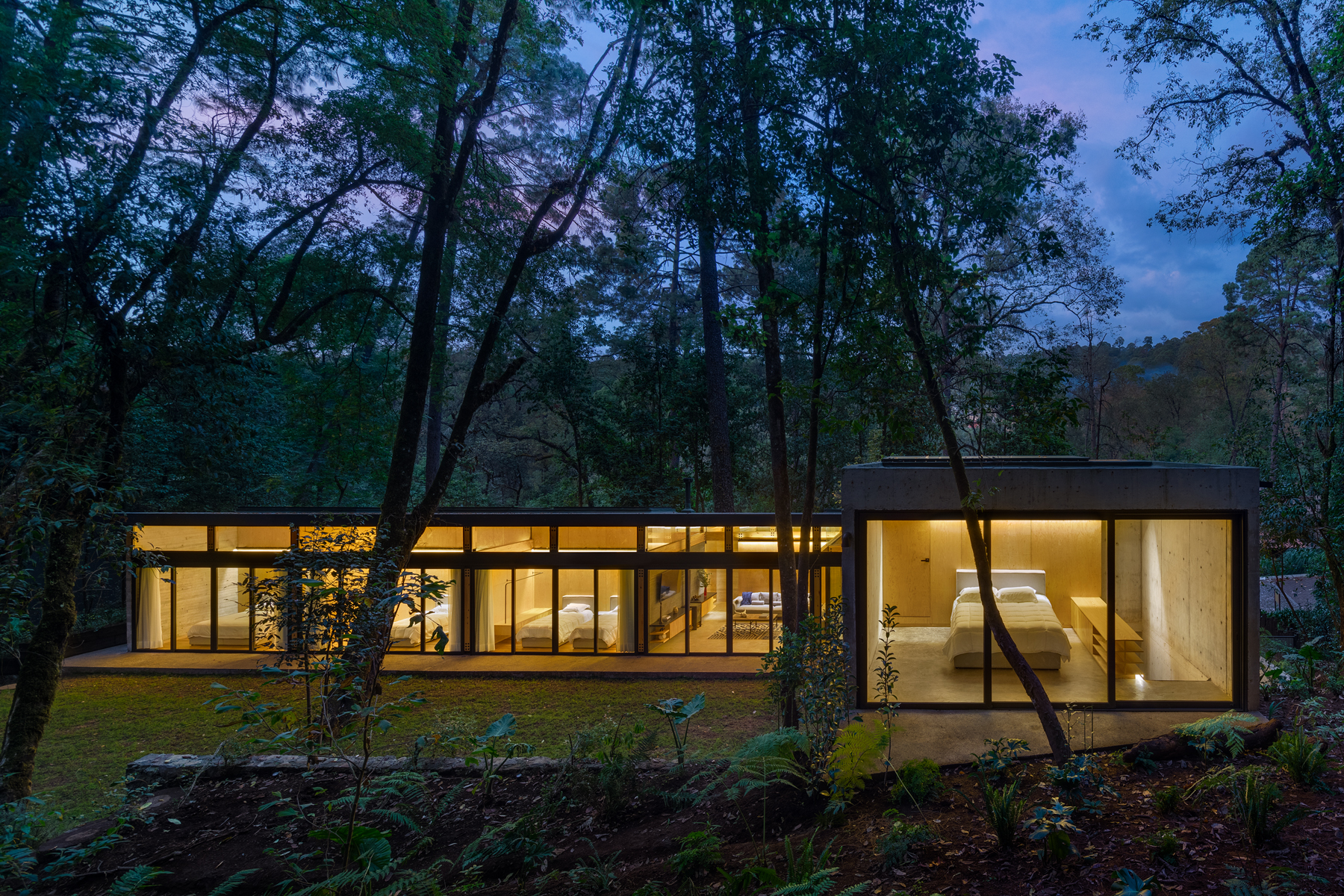
The structure is made of a simple and fairly restrained material palette. Concrete, steel, local stone and structural pine wood come together in a geometric volume that hosts the main domestic spaces. It appears opaque and mysterious from one side, but the other side is glazed and open towards the environment, spilling out onto elevated pathways, decked terraces and a swimming pool, merging indoors and outdoors. It is precisely this relationship between the generous internal spaces and the green outdoors that gives the house its distinct sense of luxury.
Almost everything, from the living spaces to three double bedrooms and bathrooms, is arranged in a linear fashion across the main, elevated ground level. A basement below holds auxiliary spaces, such as storage and mechanical rooms, while an added floor above the TV room provides a guestroom and en suite.
FSC-certified wood was used throughout, while a rainwater harvesting system and a wastewater recycling treatment plant tend to the home's water needs – reinforcing the architects' goal of designing a residence with a strong presence that’s gentle on the environment. ‘The project is simple and honest in essence,' say the architects. ‘Instead of existing separately, the structure and the finishes mimic each other; they are one and the same. The colour palette throughout the house is neutral and calming.'
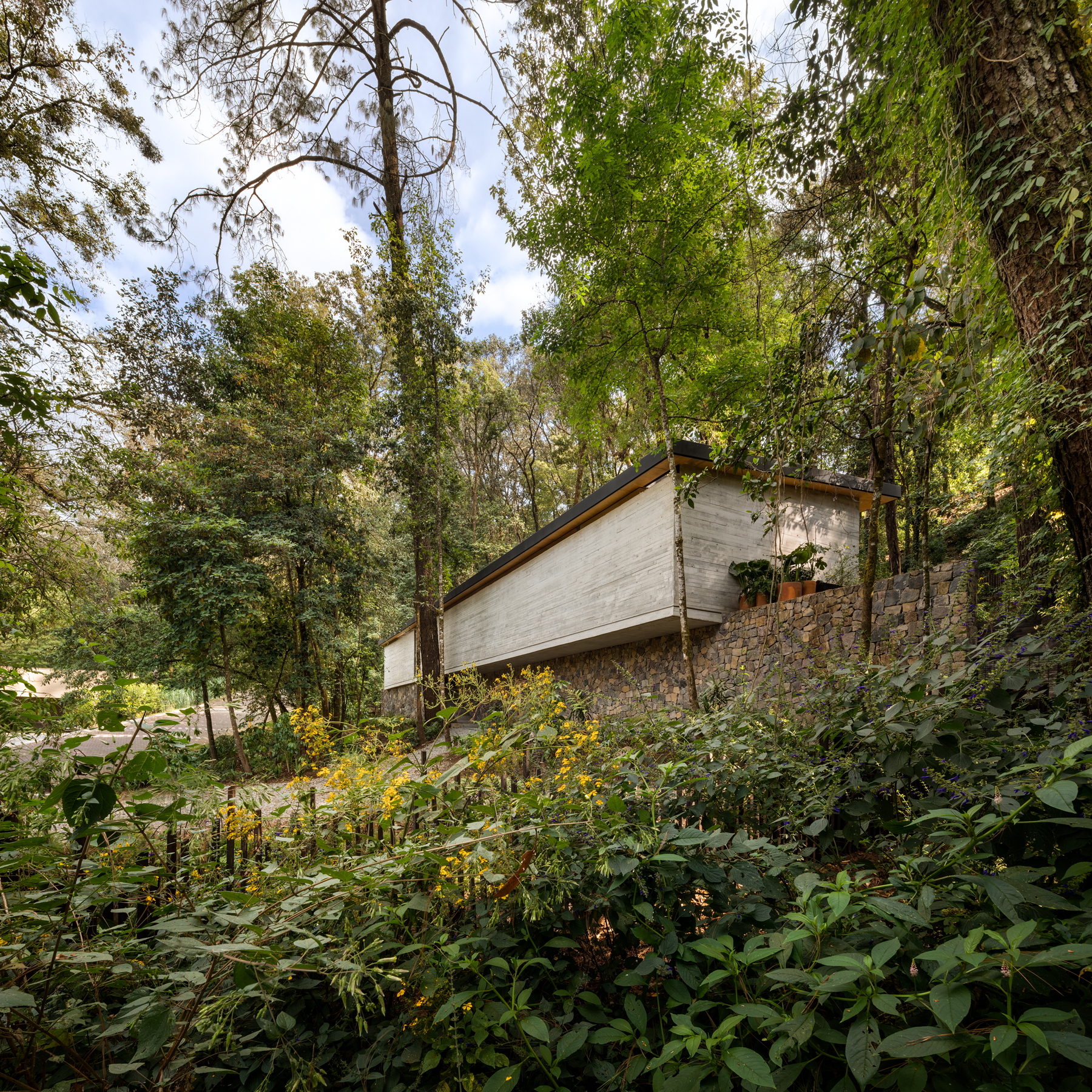
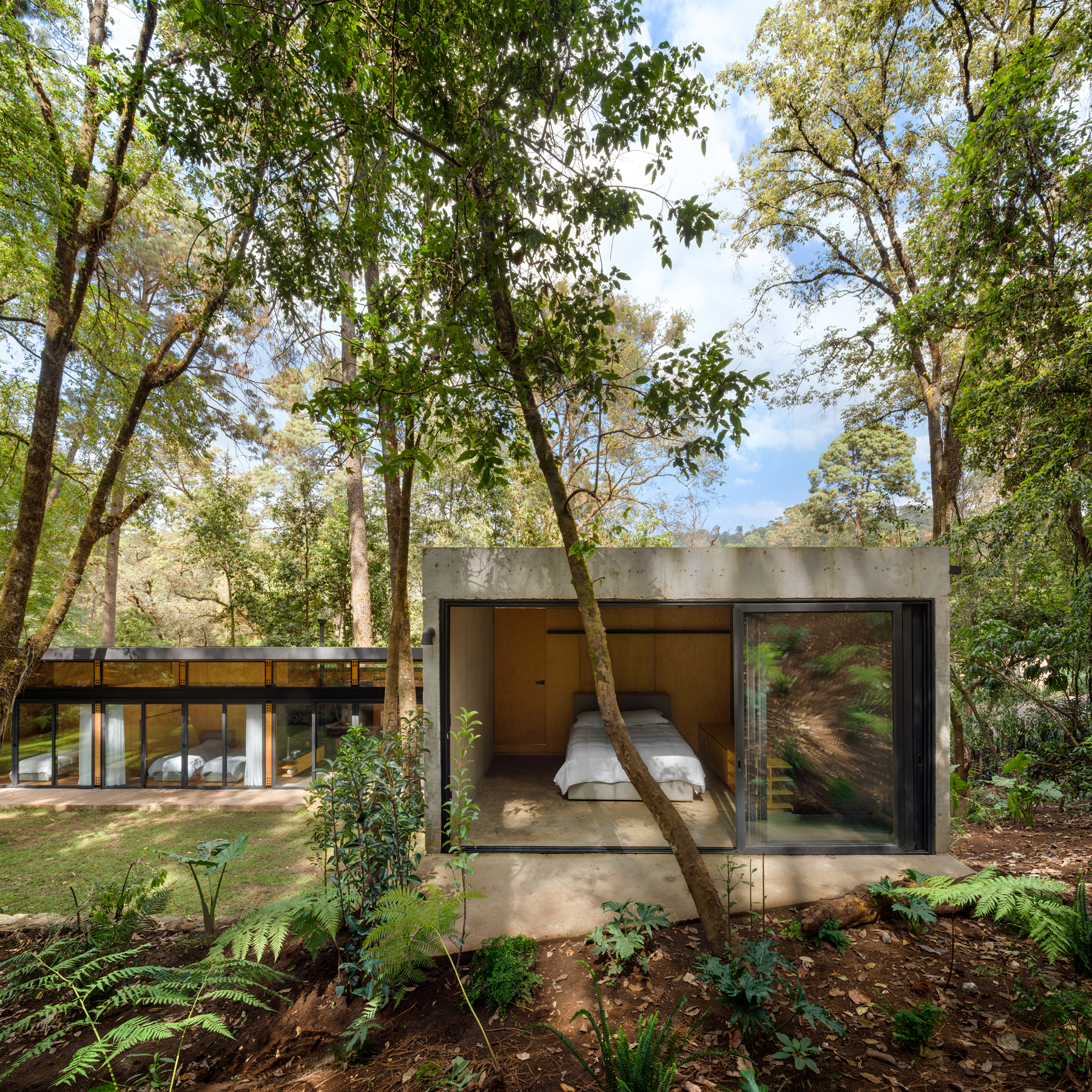
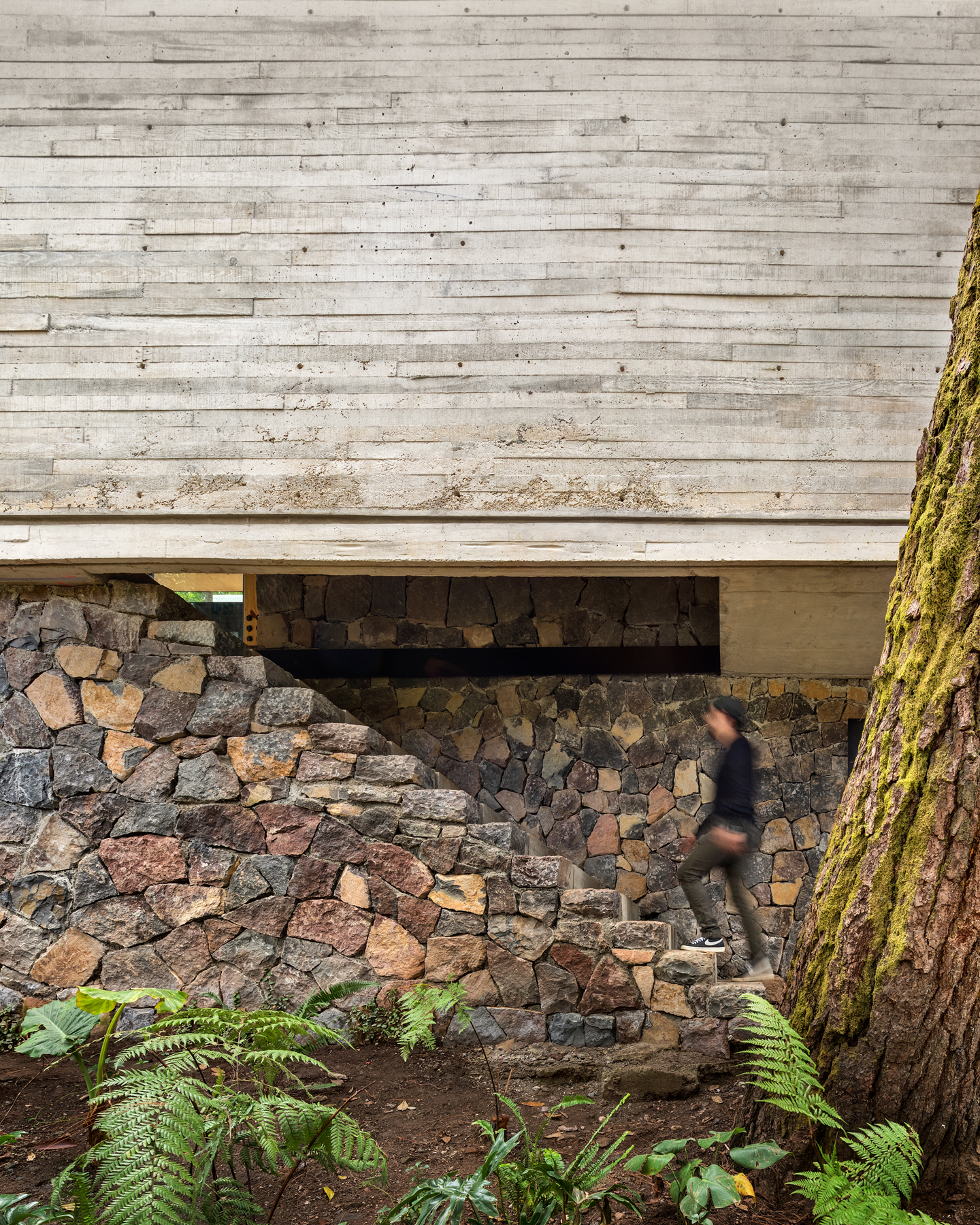
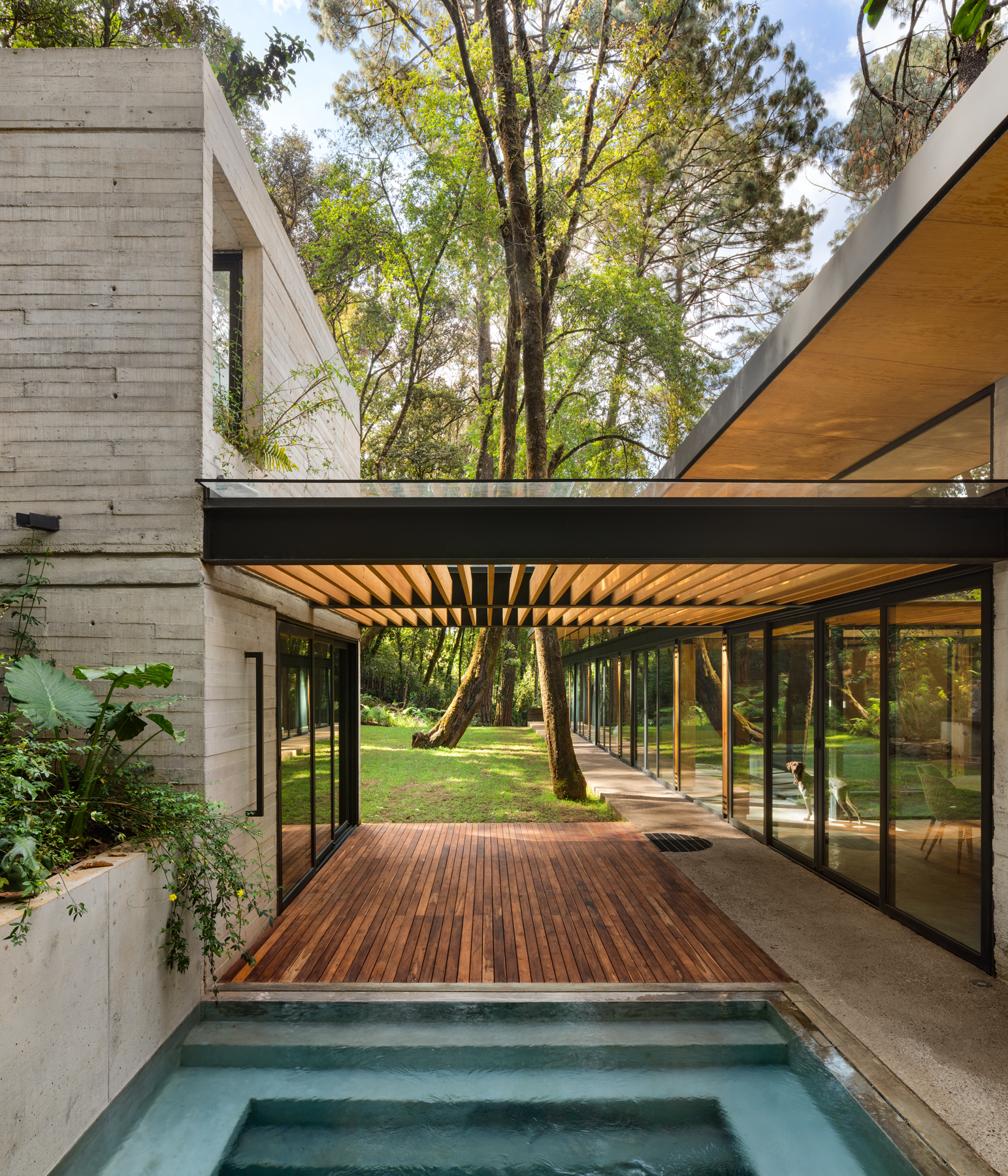
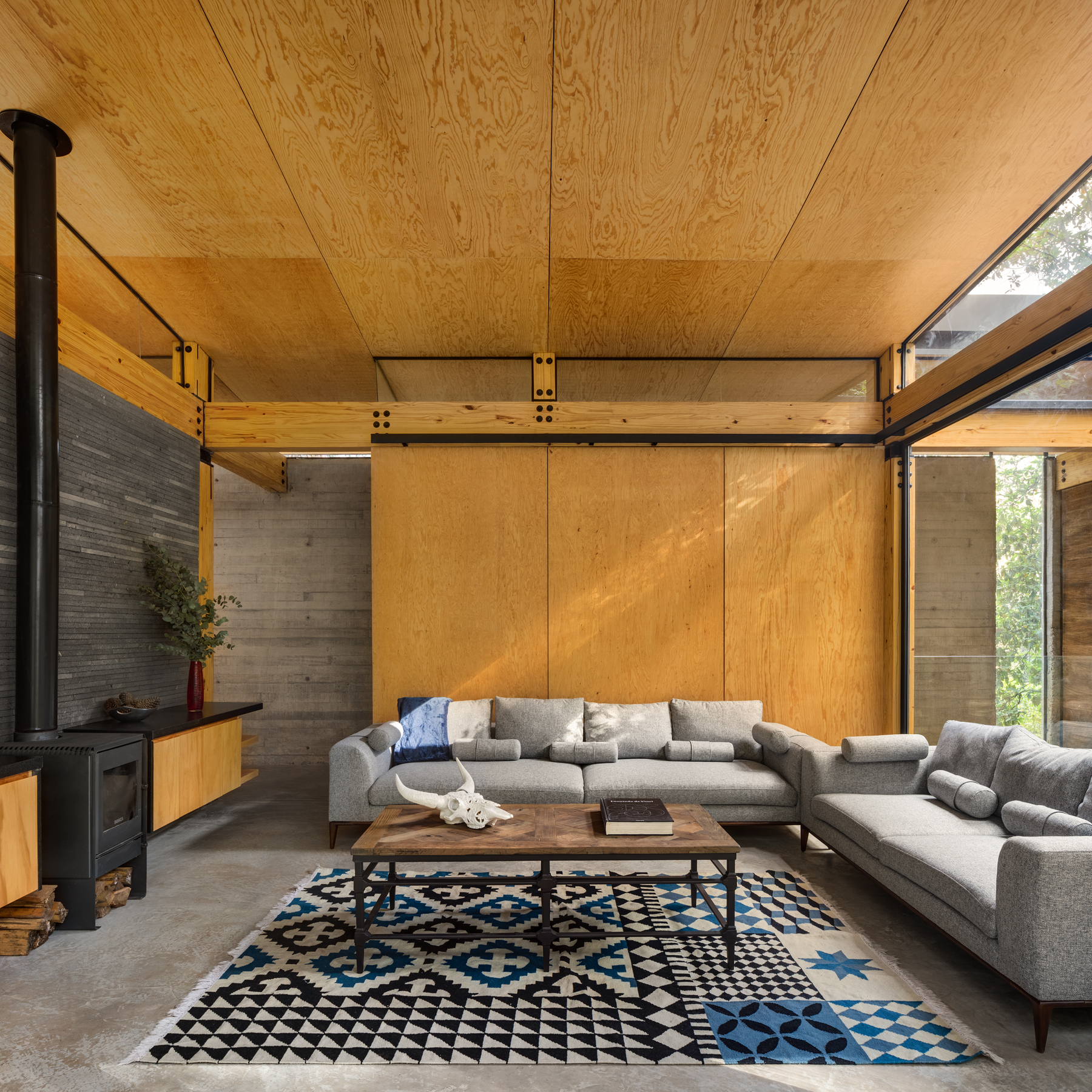
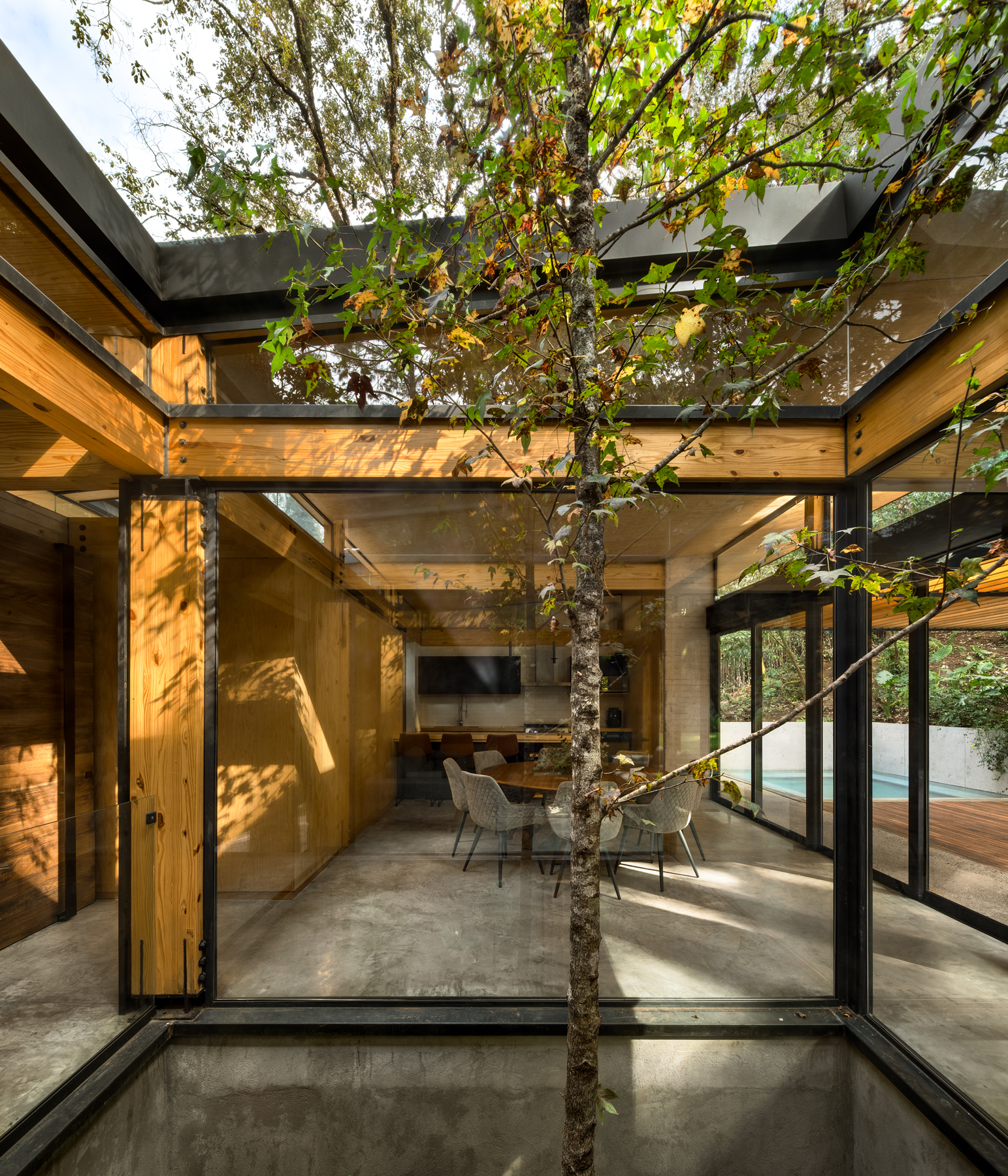
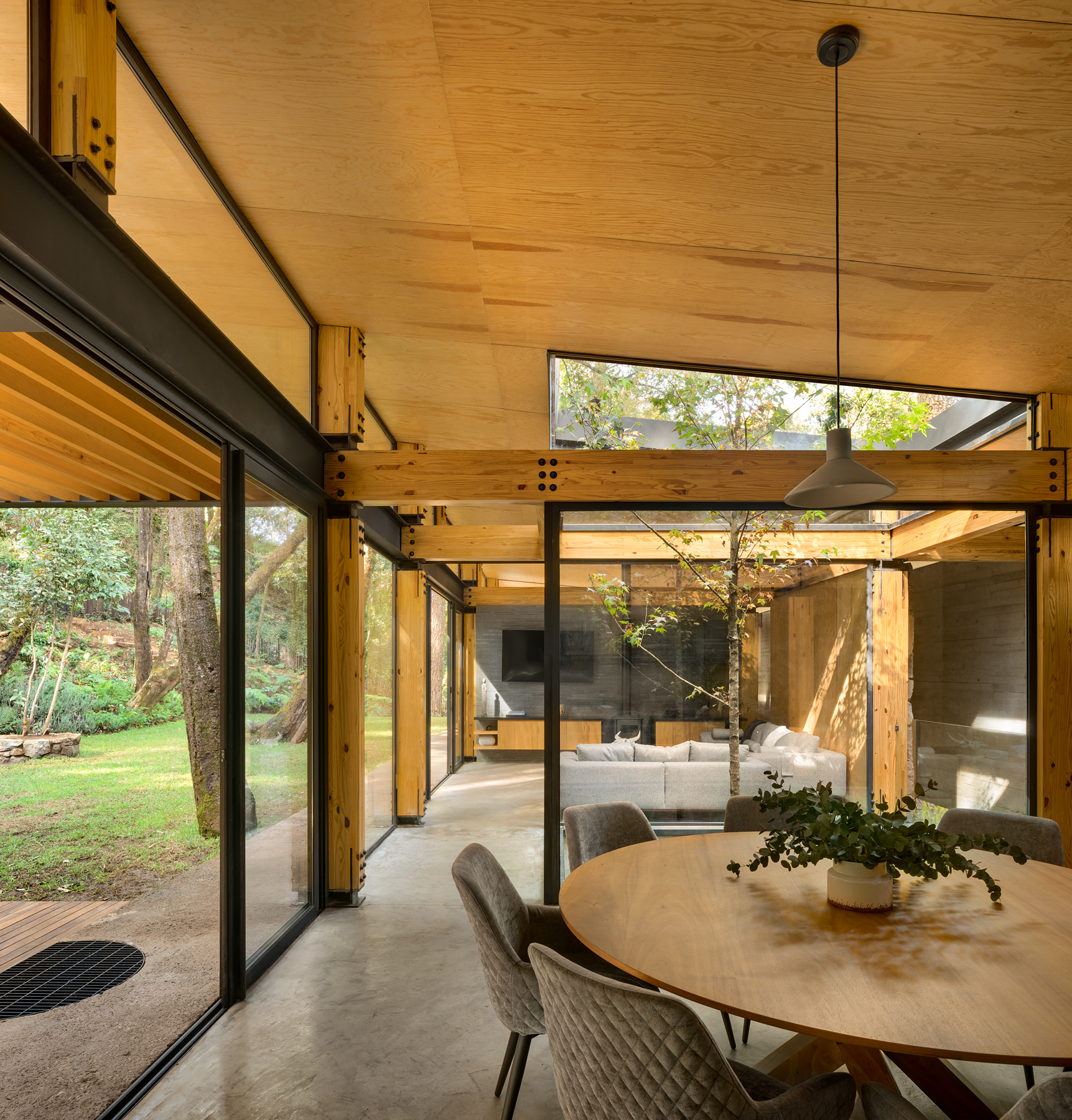
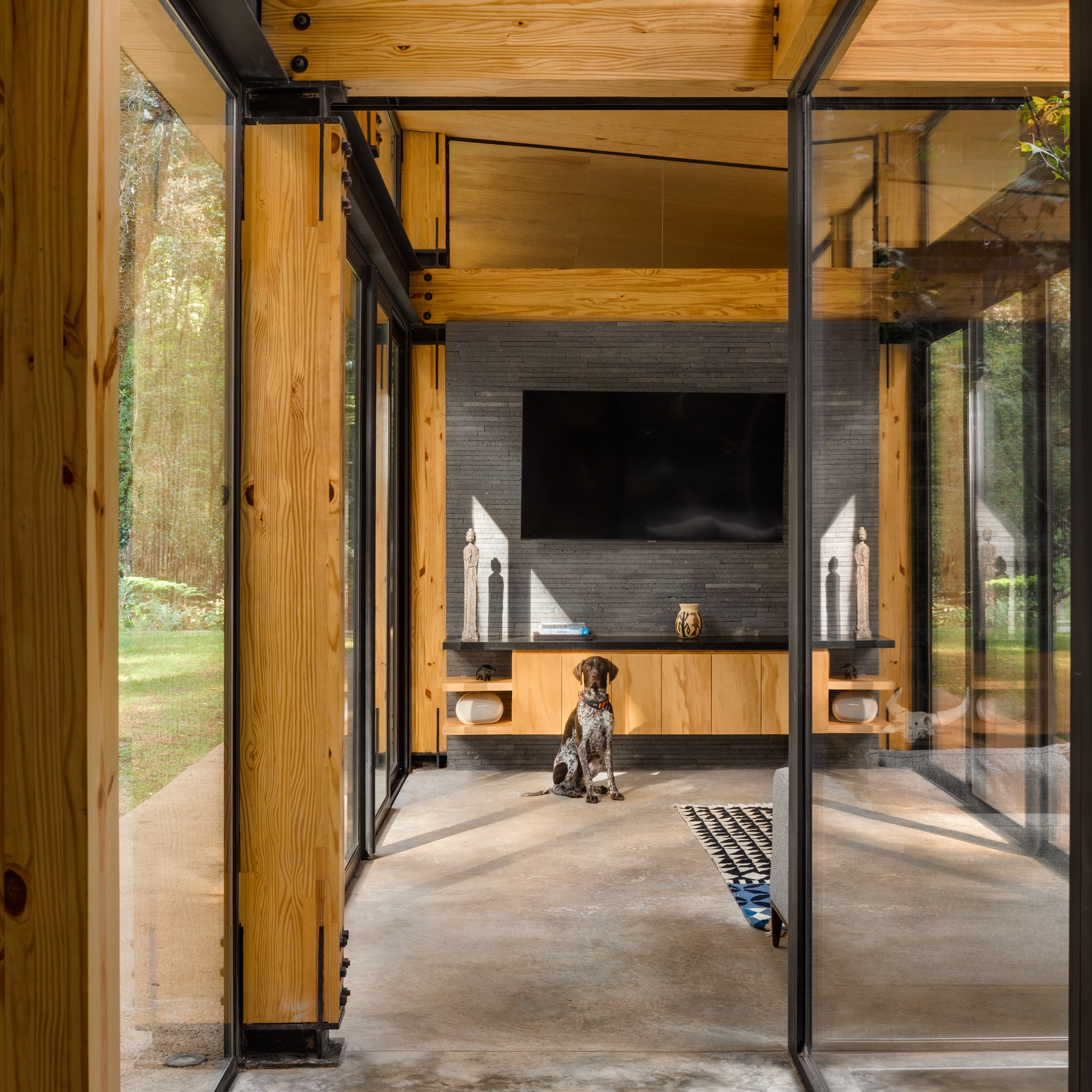
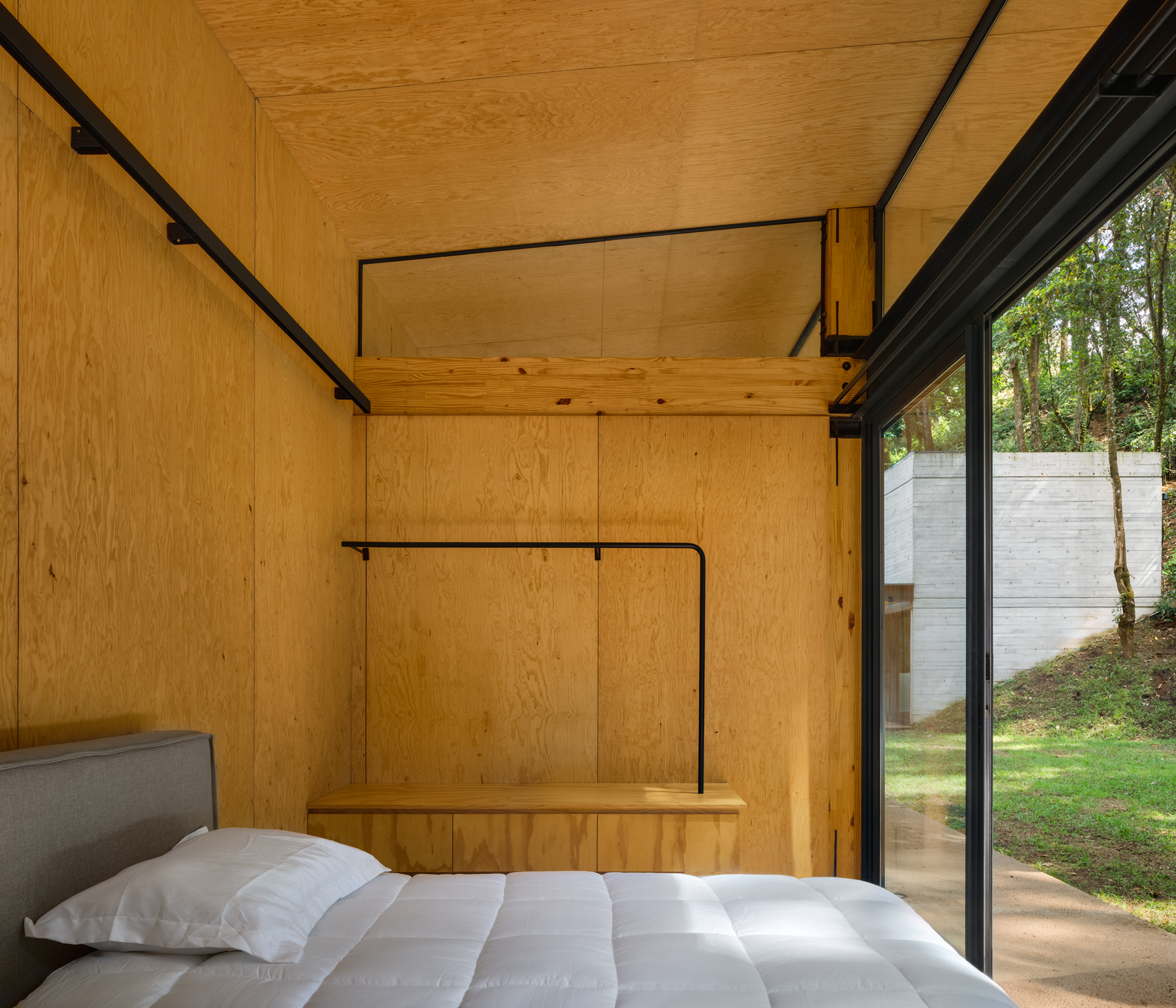
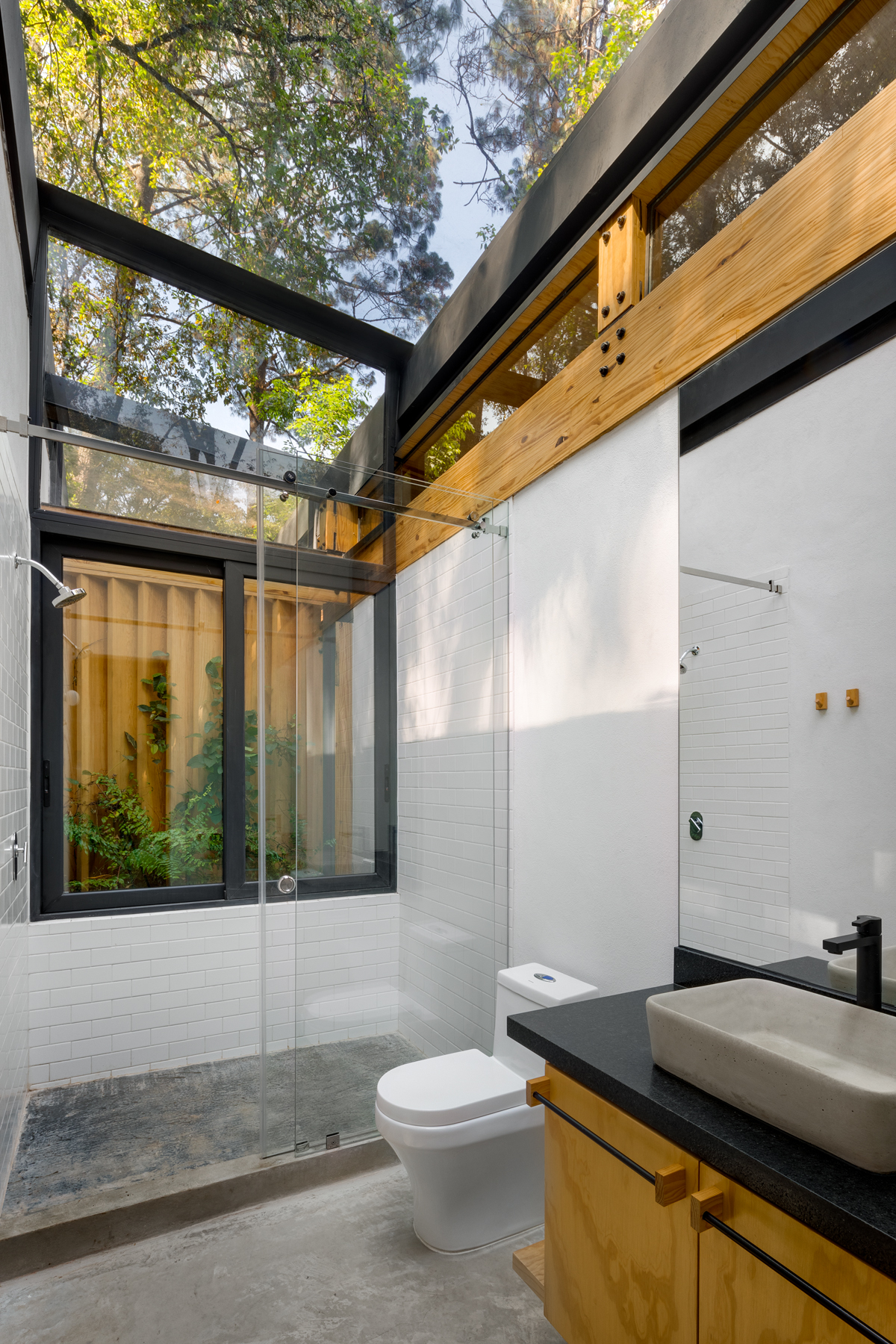
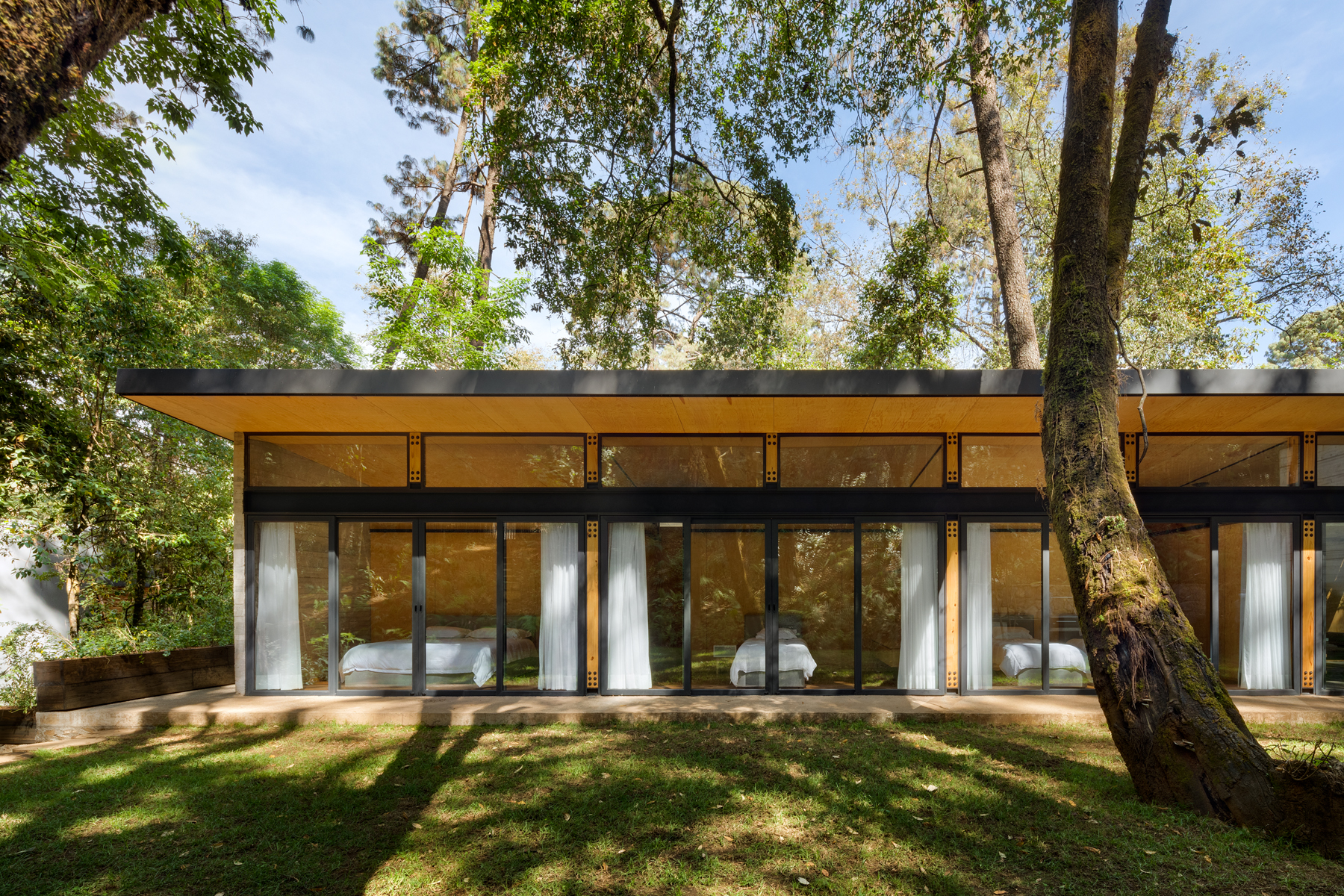
INFORMATION
tallerparalelo.mx
Wallpaper* Newsletter
Receive our daily digest of inspiration, escapism and design stories from around the world direct to your inbox.
Ellie Stathaki is the Architecture & Environment Director at Wallpaper*. She trained as an architect at the Aristotle University of Thessaloniki in Greece and studied architectural history at the Bartlett in London. Now an established journalist, she has been a member of the Wallpaper* team since 2006, visiting buildings across the globe and interviewing leading architects such as Tadao Ando and Rem Koolhaas. Ellie has also taken part in judging panels, moderated events, curated shows and contributed in books, such as The Contemporary House (Thames & Hudson, 2018), Glenn Sestig Architecture Diary (2020) and House London (2022).
-
 All-In is the Paris-based label making full-force fashion for main character dressing
All-In is the Paris-based label making full-force fashion for main character dressingPart of our monthly Uprising series, Wallpaper* meets Benjamin Barron and Bror August Vestbø of All-In, the LVMH Prize-nominated label which bases its collections on a riotous cast of characters – real and imagined
By Orla Brennan
-
 Maserati joins forces with Giorgetti for a turbo-charged relationship
Maserati joins forces with Giorgetti for a turbo-charged relationshipAnnouncing their marriage during Milan Design Week, the brands unveiled a collection, a car and a long term commitment
By Hugo Macdonald
-
 Through an innovative new training program, Poltrona Frau aims to safeguard Italian craft
Through an innovative new training program, Poltrona Frau aims to safeguard Italian craftThe heritage furniture manufacturer is training a new generation of leather artisans
By Cristina Kiran Piotti
-
 Tour the wonderful homes of ‘Casa Mexicana’, an ode to residential architecture in Mexico
Tour the wonderful homes of ‘Casa Mexicana’, an ode to residential architecture in Mexico‘Casa Mexicana’ is a new book celebrating the country’s residential architecture, highlighting its influence across the world
By Ellie Stathaki
-
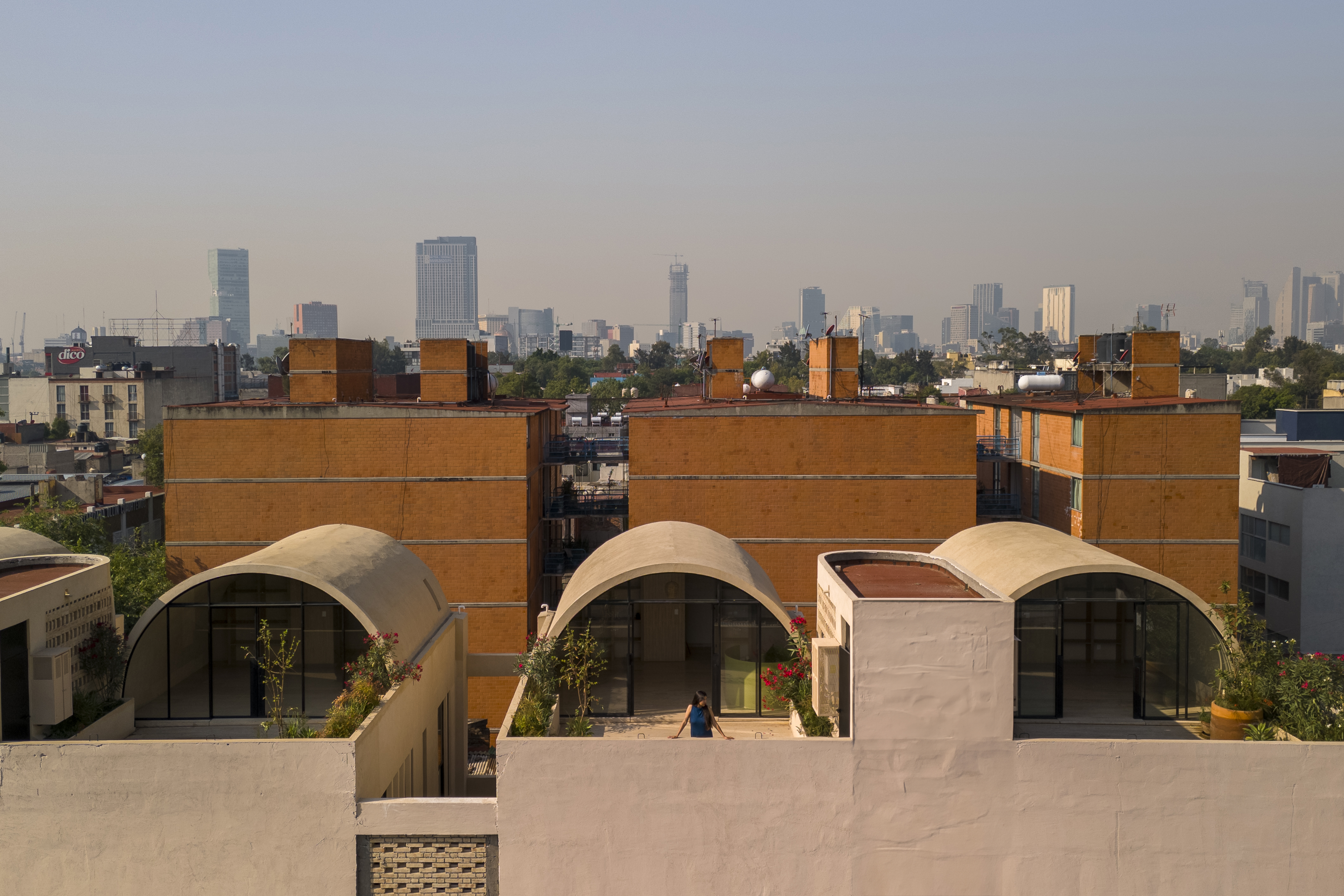 A barrel vault rooftop adds drama to these homes in Mexico City
A barrel vault rooftop adds drama to these homes in Mexico CityExplore Mariano Azuela 194, a housing project by Bloqe Arquitetura, which celebrates Mexico City's Santa Maria la Ribera neighbourhood
By Ellie Stathaki
-
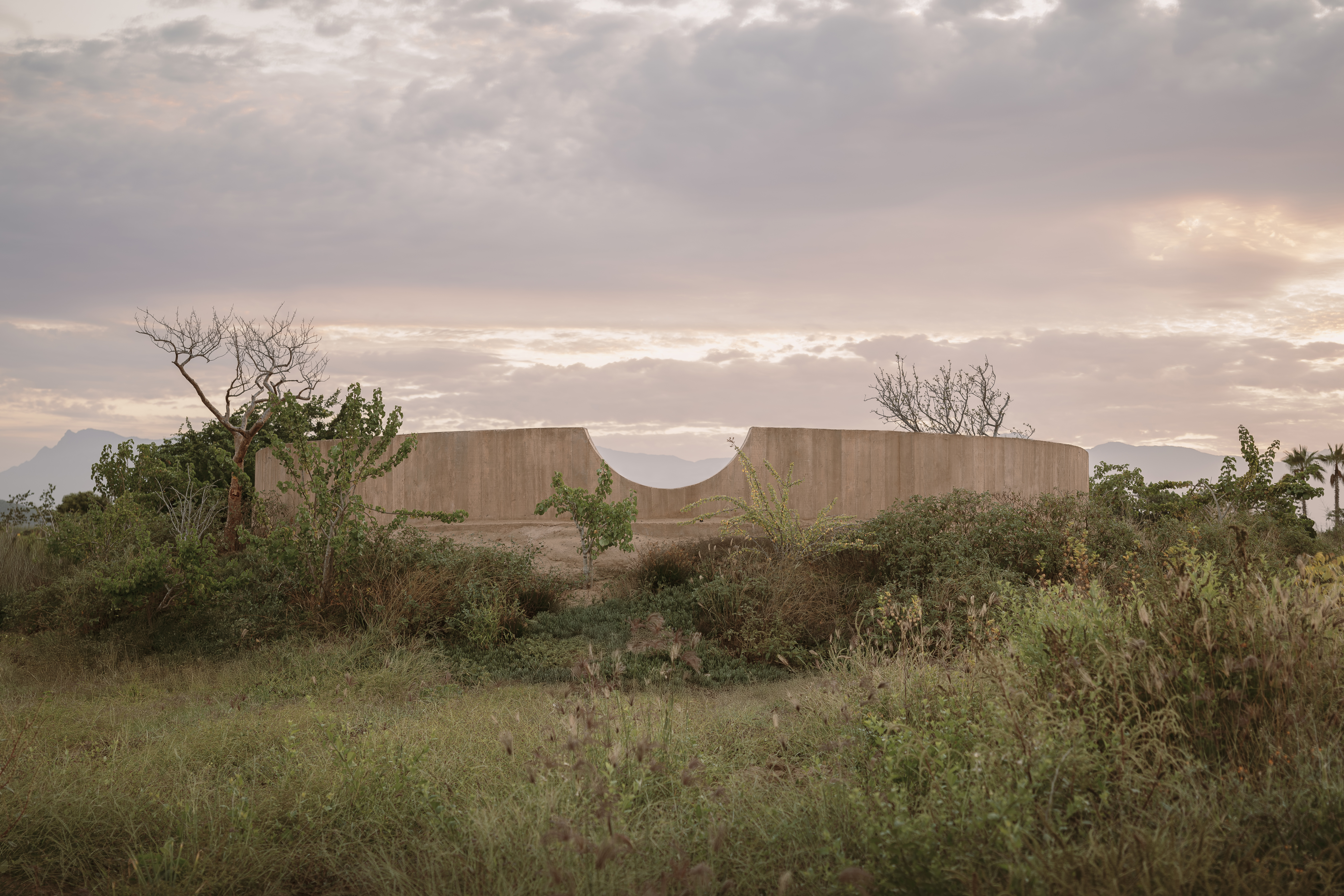 Explore a minimalist, non-religious ceremony space in the Baja California Desert
Explore a minimalist, non-religious ceremony space in the Baja California DesertSpiritual Enclosure, a minimalist, non-religious ceremony space designed by Ruben Valdez in Mexico's Baja California Desert, offers flexibility and calm
By Ellie Stathaki
-
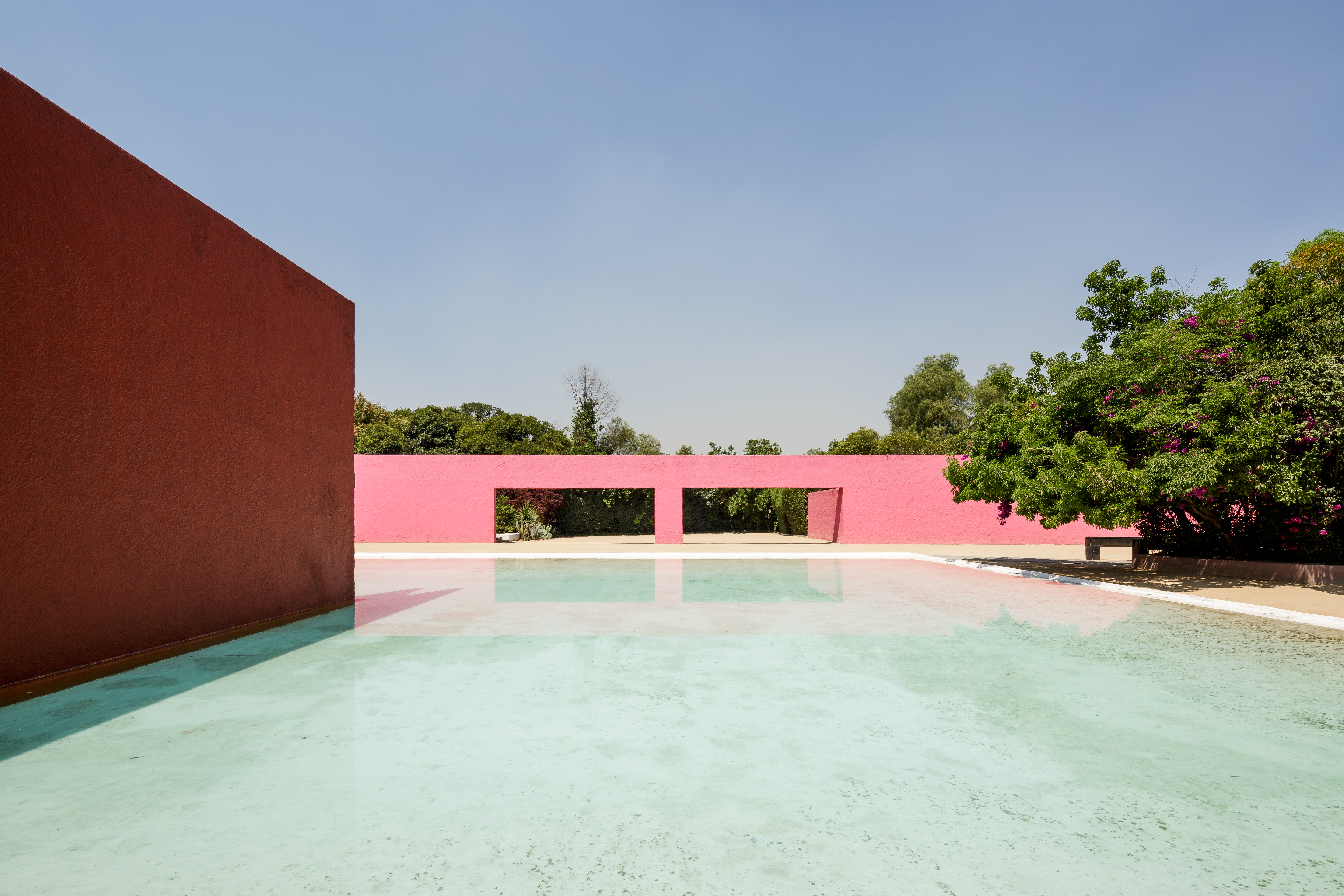 La Cuadra: Luis Barragán’s Mexico modernist icon enters a new chapter
La Cuadra: Luis Barragán’s Mexico modernist icon enters a new chapterLa Cuadra San Cristóbal by Luis Barragán is reborn through a Fundación Fernando Romero initiative in Mexico City; we meet with the foundation's founder, architect and design curator Fernando Romero to discuss the plans
By Mimi Zeiger
-
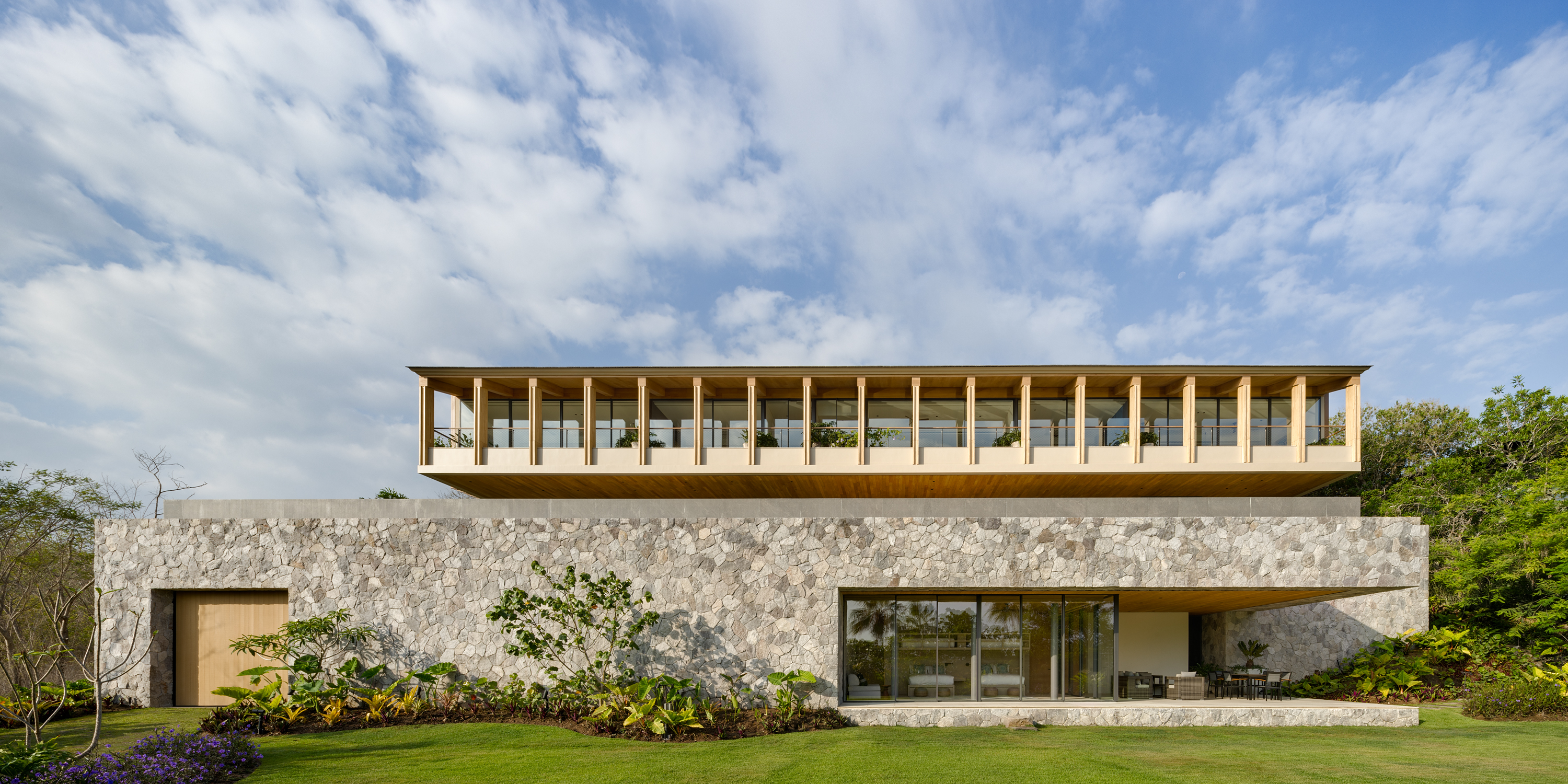 Enjoy whale watching from this east coast villa in Mexico, a contemporary oceanside gem
Enjoy whale watching from this east coast villa in Mexico, a contemporary oceanside gemEast coast villa Casa Tupika in Riviera Nayarit, Mexico, is designed by architecture studios BLANCASMORAN and Rzero to be in harmony with its coastal and tropical context
By Tianna Williams
-
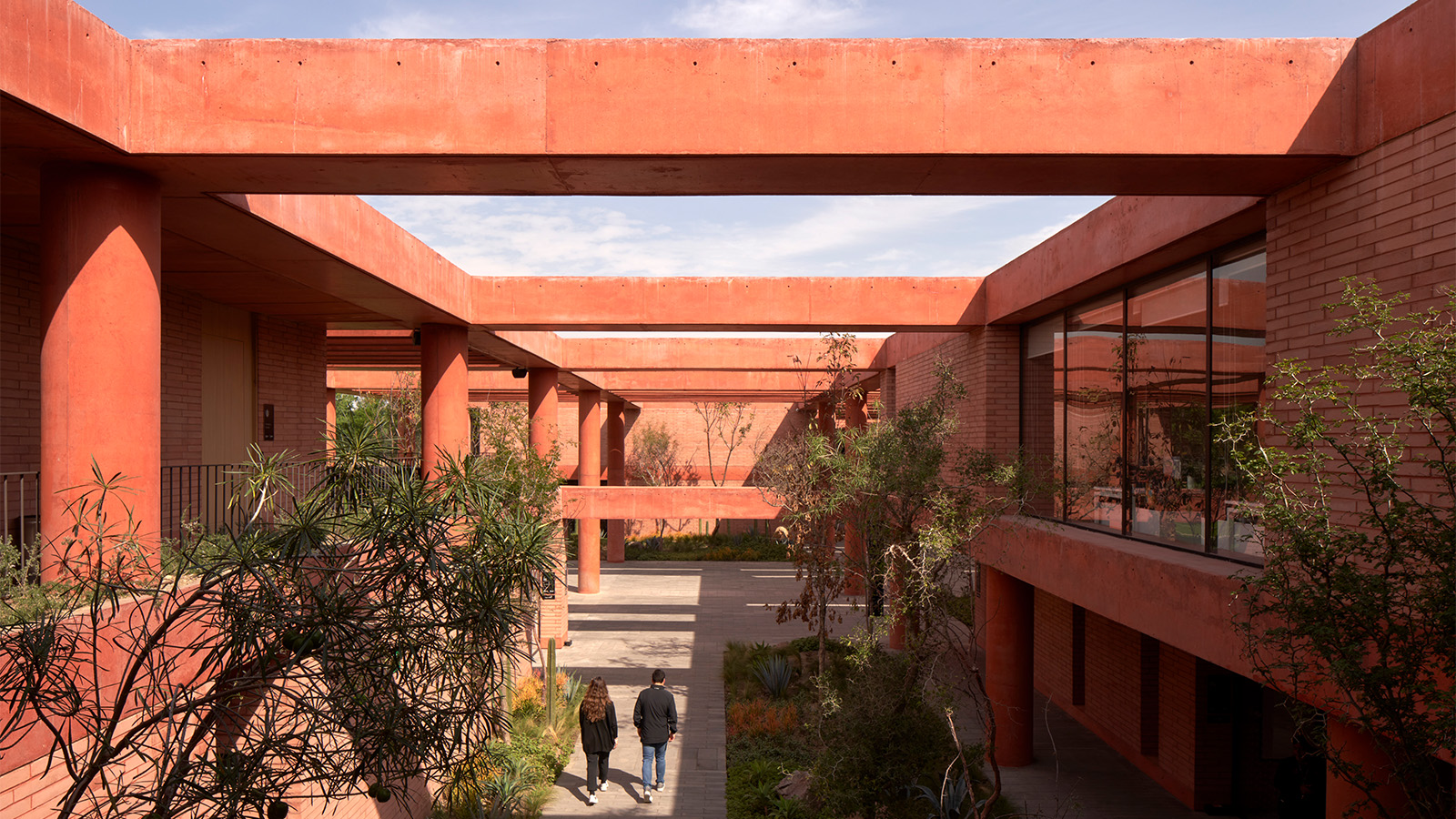 Mexico's long-lived football club Atlas FC unveils its new grounds
Mexico's long-lived football club Atlas FC unveils its new groundsSordo Madaleno designs a new home for Atlas FC; welcome to Academia Atlas, including six professional football fields, clubhouses, applied sport science facilities and administrative offices
By Tianna Williams
-
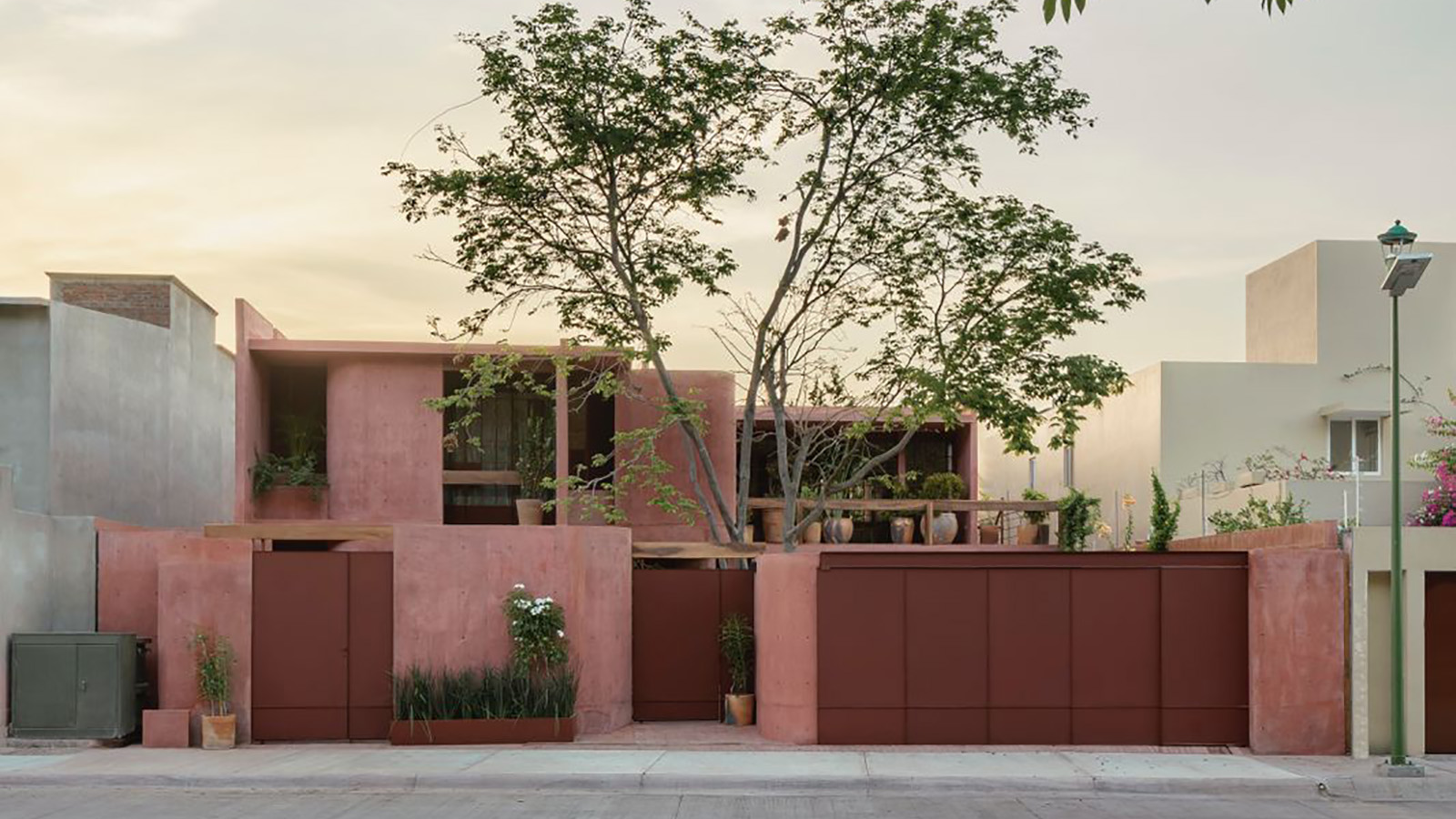 Discover Casa Roja, a red spatial exploration of a house in Mexico
Discover Casa Roja, a red spatial exploration of a house in MexicoCasa Roja, a red house in Mexico by architect Angel Garcia, is a spatial exploration of indoor and outdoor relationships with a deeply site-specific approach
By Ellie Stathaki
-
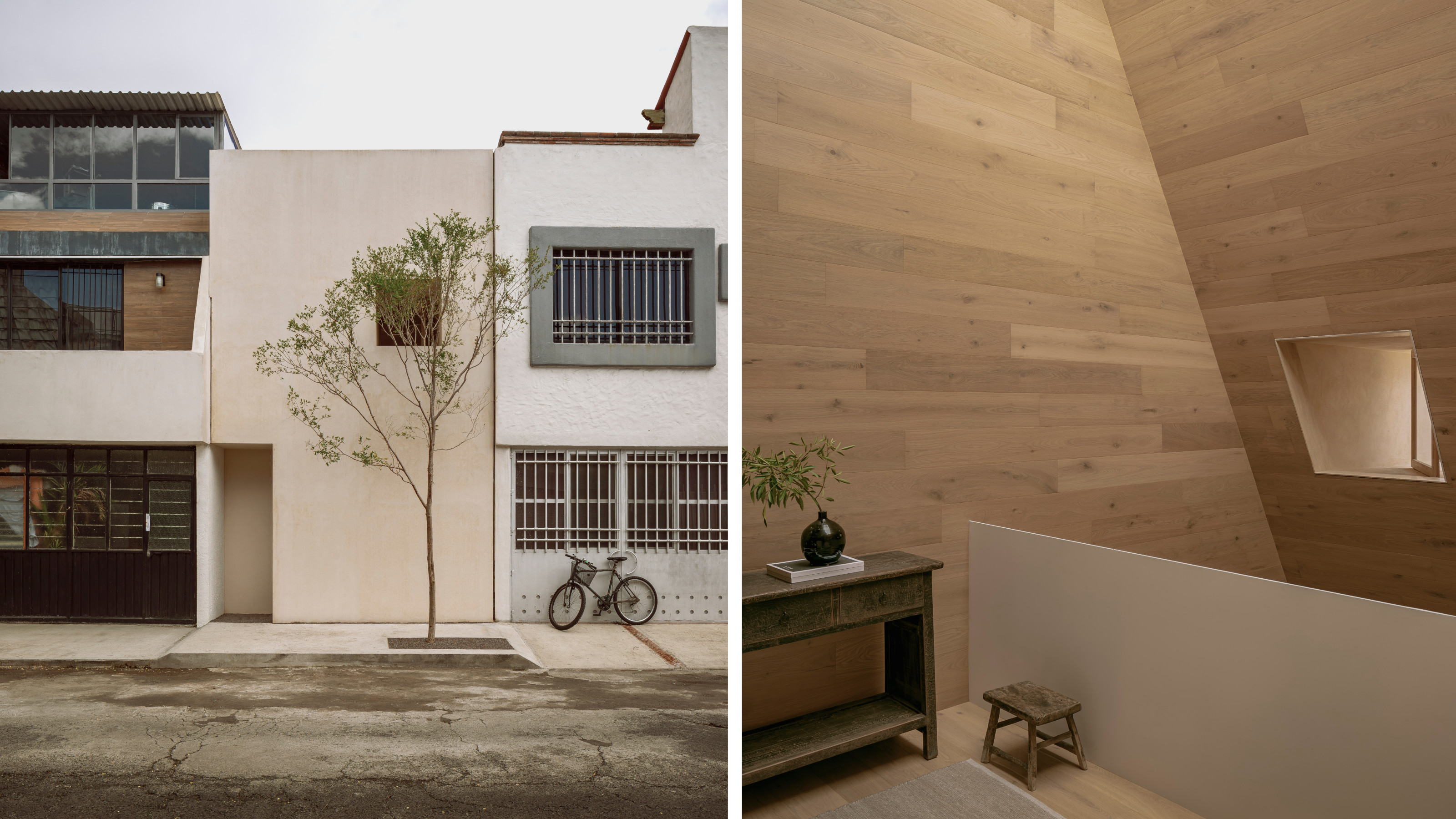 HW Studio’s Casa Emma transforms a humble terrace house into a realm of light and space
HW Studio’s Casa Emma transforms a humble terrace house into a realm of light and spaceThe living spaces in HW Studio’s Casa Emma, a new one-bedroom house in Morelia, Mexico, appear to have been carved from a solid structure
By Jonathan Bell